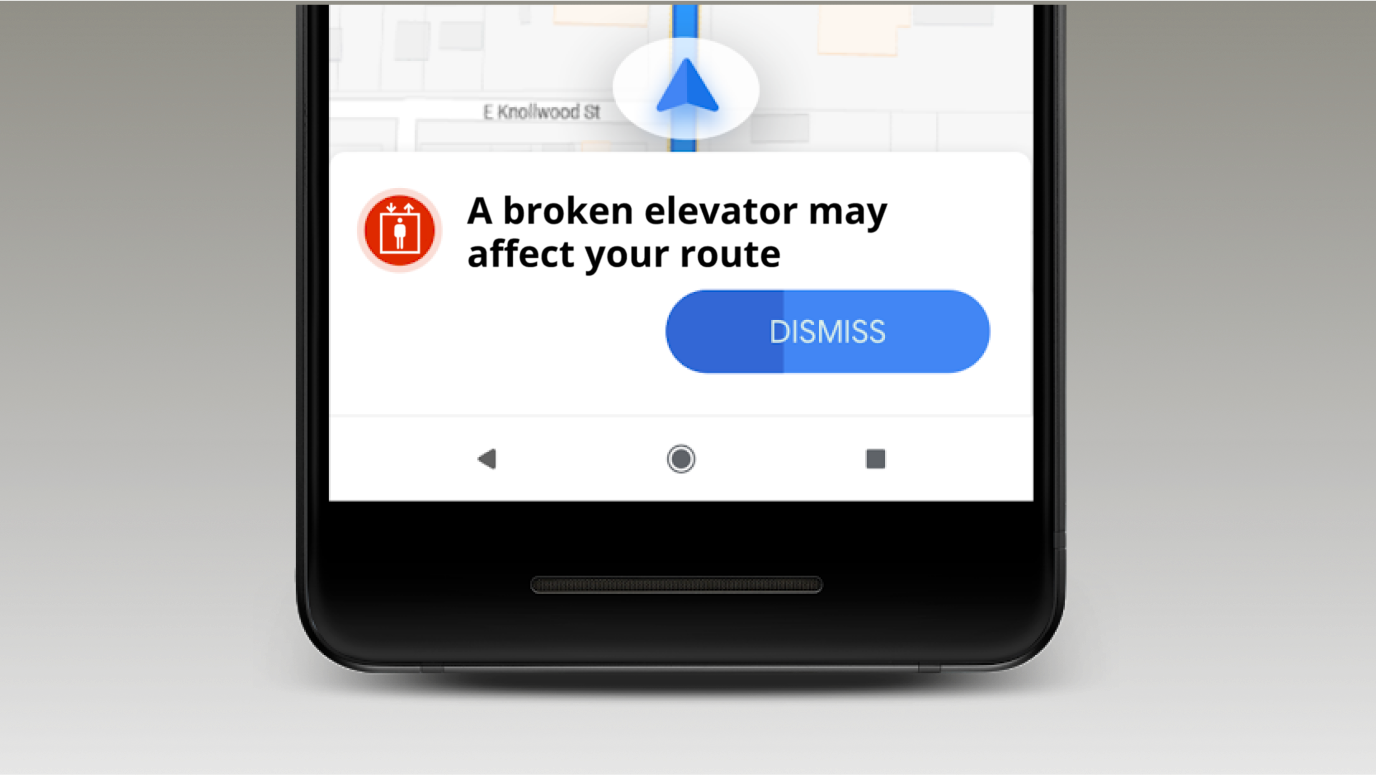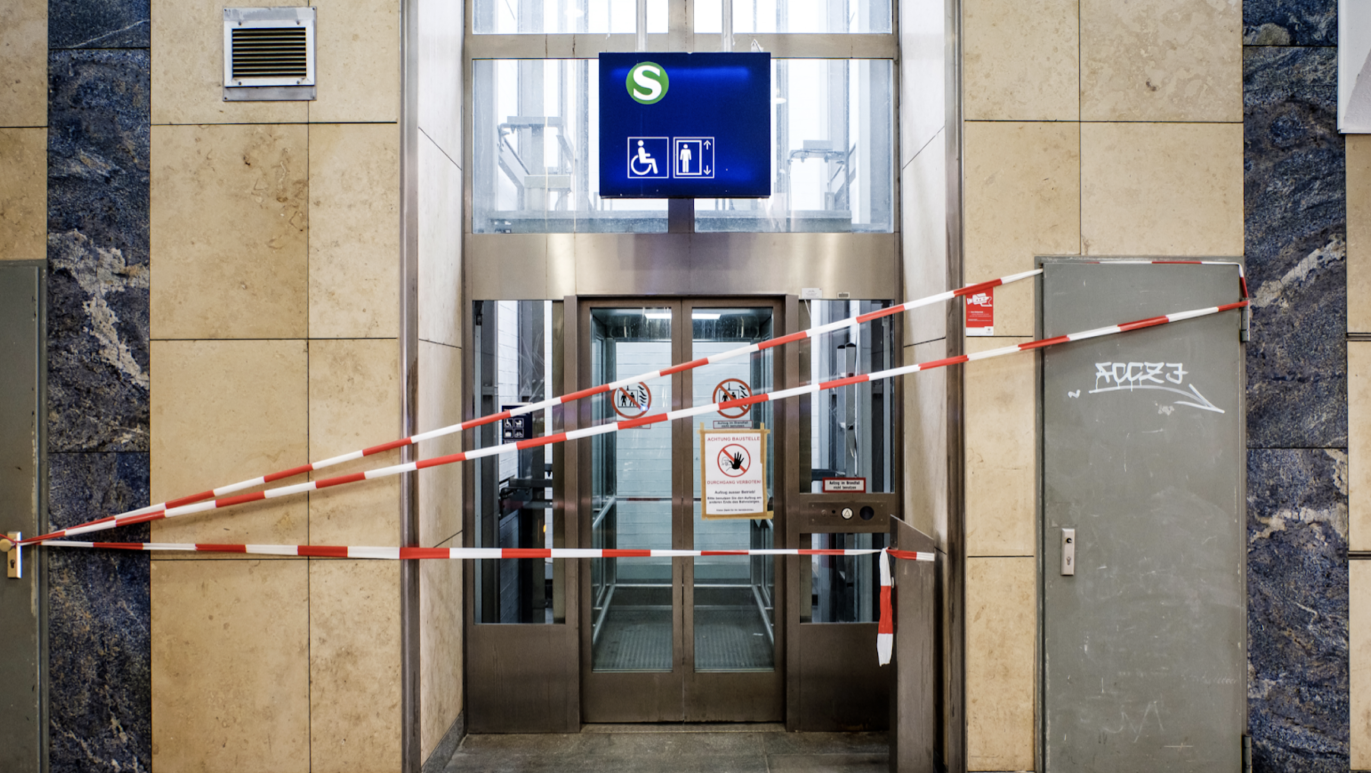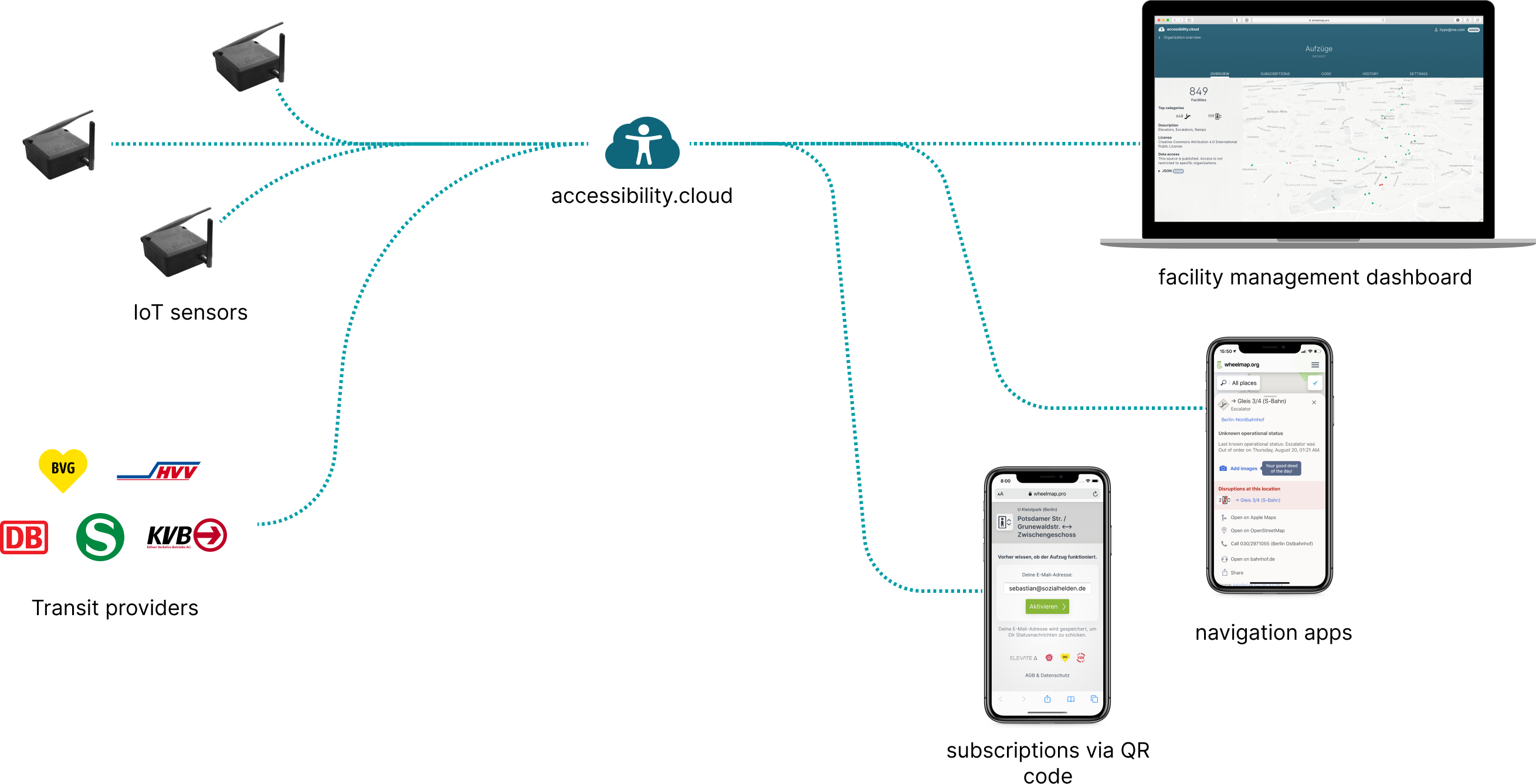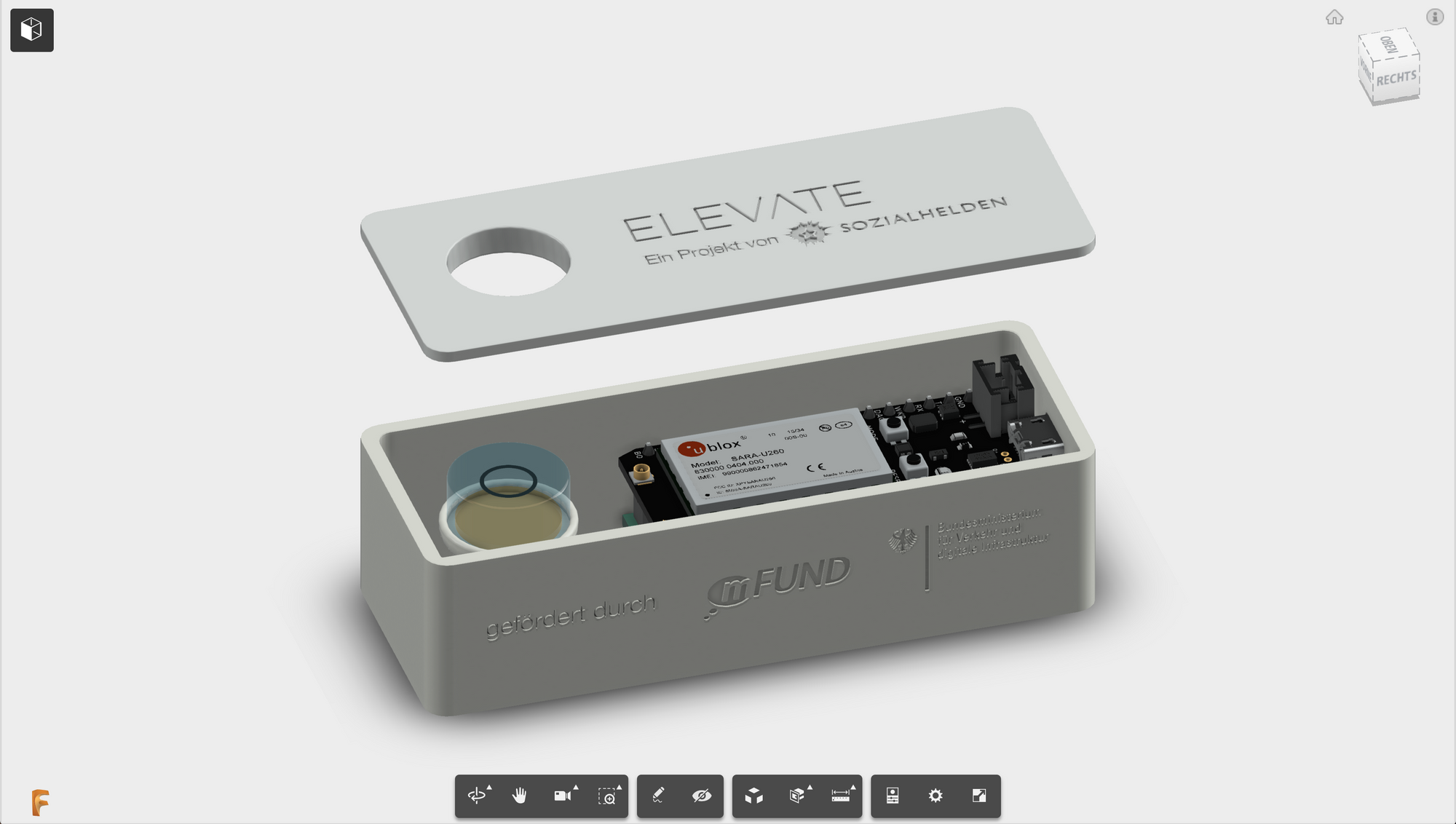Elevate Delta – know beforehand if an elevator works
Let’s solve one of the biggest obstacles in transit mobility – by moving elevator manufacturers, operators, and users closer together.


Around 10% of elevators in public transit are not in operation at any given time. But which? This knowledge is crucial for people with mobility impairments and parents with strollers.
For many, a service disruption means an hour extra journey – or more. Every wheelchair user who uses public transit can tell you a few stories about getting stuck in front of a broken elevator. A broken lift can mean you have to travel 50 miles more in high-speed rail connections – only to exit the train. Then you still have to travel 50 miles back. Except if there is no train back. Then you’re pretty much hosed.
This story happened to human rights activist Raúl Krauthausen, who uses a wheelchair. For him, elevators are invisible enemies. He fights them with a grass-roots movement that resulted in broken-lifts.org, an app that shows broken lifts in the Berlin metro region.
For mobility-impaired Berlinian transit riders, this app replaced listening to the radio every morning. (A radio station regularly broadcasted which train and subway lines you could use with a wheelchair.)
Being a social entrepreneur, Raúl also founded Sozialhelden, where I happen to work. We are currently building broken-lifts’ successor, Elevate Delta.
Level 1: How could we avoid broken elevators in advance?
In our talks with manufacturers, operators and city planners, we found that it’s not easy to build unbreakable elevators in public transit within reasonable budget limits. While policymakers can positively influence service disruptions (note: never forget to order an SLA to your elevator), issues like vandalism are notoriously difficult to tackle. Elevators aren’t built to last a human lifetime anymore, but for a lifespan of around 15 years (if you know why this is the case, let me know!). So even after we’re pushing physical and political boundaries, we need something that works in the presence of disruptions.
Right now, we evaluate a new system together with Berlin’s subway agency BVG. Riders at the Stadtmitte subway can scan QR codes on both elevators, enter their email address, and get notified if the scanned elevator is out of order. When it works again, your phone buzzes once more.

Here is the user journey we have designed for this:

Notifications like this can dramatically improve your life if you have a daily commute like Raúl’s, which includes multiple elevators. But to be honest: I’m not too fond of QR codes, and potential users first have to find out about this service. What about all the others that don’t find the feature? How would a more attractive solution look? Why do I need to scan something? And why do I even need to know about the elevator in advance? I just want to get from A to B like everybody else!
Level 2: How could we get elevators into mainstream navigation apps?
We can measure traffic jams by crowdsourcing phone usage data and route car drivers around them. So we should be able to route pedestrians and wheelchair users around broken elevators, too.
First, most of us use Google Maps and Apple Maps for transit. Second, many transit elevators do already have cloud-connected sensors for maintenance monitoring and emergency calls. Their operational status is just not exposed to company outsiders as data. Yet.
If operators would offer the right APIs, all navigation apps could integrate elevator info. By mashing up some existing standards on the operator side, our phones could calculate automatic alternative routes around broken lifts. Everybody who can’t climb stairs would love this! Here is how such a detour might look:

One can dream, but our team wants this vision to happen. We have built an elaborate system for elevator status tracking, contributed to standards, and tech-evangelized as a side hustle.
Luckily, we are not alone. Newer standards permit transit agencies to publish indoor navigation graphs of their stations, including elevators, escalators, and stairs. With GTFS real-time, it seems that elevators in mainstream navigation apps might be around the corner.
But setting up a complete GTFS routing graph is hard. Before getting there, elevator operators with any simple API can join Elevate Delta to get their elevator statuses shown in apps like Wheelmap. Signing up gives operators a full-featured database + dashboard that integrates any elevator API:

The dashboard app’s central feature is a unified overview that allows you to mix multiple sources, as long as they deliver information on which elevator is working. Elevators are often shared between operators in public transit, so the system works across organization and manufacturer boundaries while separating responsibilities transparently. If an elevator isn’t digitally connected yet, you can enter service disruptions manually – or upgrade your legacy facilities with sensors that Sozialhelden provides. The app features a lot of little magic details. An example of this is text-to-speech and multilingual string management. Developers often overlook this, but both are an absolute must for tourism use cases, voice assistants, and screenreader accessibility.
Elevate is powered by accessibility.cloud: This gives elevator operators a turn-key open data API with granular access control and licensing. The API makes integration for external developers easy – without exposing internal system details. Here is a system overview:

You can even connect elevators if they are offline: We have deployed autonomous sensors at a German transport company, and a larger German city is currently evaluating them, too. An elevator technician can install them in less than 5 minutes, and they work on top of any elevator cabin. The official product launch is scheduled for 2022.

There’s much more – but that’s for another time.
If you’re working with elevator manufacturers, operators, or transit companies, be sure to write an email to Sozialhelden to learn more, exchange ideas, and participate in the project.
You might make thousands of people happy. I’d be one of them. ☺️